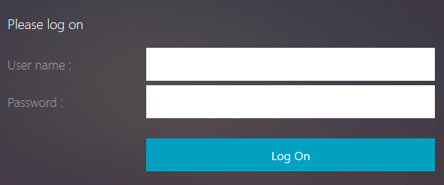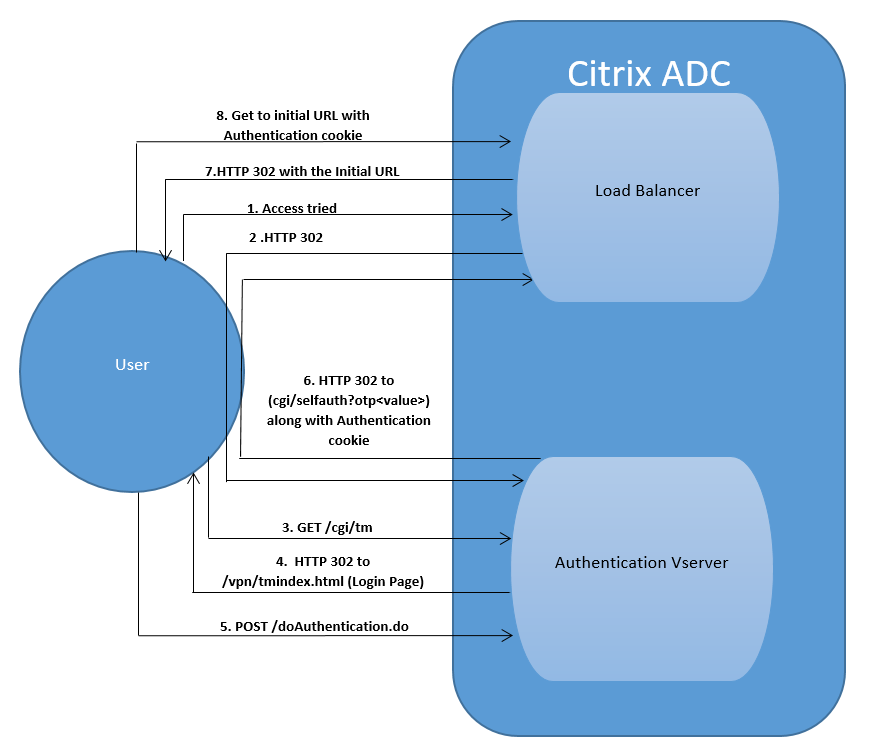-
Basic components of authentication, authorization, and auditing configuration
-
-
Forms based authentication
-
Web Application Firewall protection for VPN virtual servers and authentication virtual servers
-
On-premises NetScaler Gateway as an identity provider to Citrix Cloud
-
Authentication, authorization, and auditing with commonly used protocols
-
Troubleshoot authentication and authorization related issues
This content has been machine translated dynamically.
Dieser Inhalt ist eine maschinelle Übersetzung, die dynamisch erstellt wurde. (Haftungsausschluss)
Cet article a été traduit automatiquement de manière dynamique. (Clause de non responsabilité)
Este artículo lo ha traducido una máquina de forma dinámica. (Aviso legal)
此内容已经过机器动态翻译。 放弃
このコンテンツは動的に機械翻訳されています。免責事項
이 콘텐츠는 동적으로 기계 번역되었습니다. 책임 부인
Este texto foi traduzido automaticamente. (Aviso legal)
Questo contenuto è stato tradotto dinamicamente con traduzione automatica.(Esclusione di responsabilità))
This article has been machine translated.
Dieser Artikel wurde maschinell übersetzt. (Haftungsausschluss)
Ce article a été traduit automatiquement. (Clause de non responsabilité)
Este artículo ha sido traducido automáticamente. (Aviso legal)
この記事は機械翻訳されています.免責事項
이 기사는 기계 번역되었습니다.책임 부인
Este artigo foi traduzido automaticamente.(Aviso legal)
这篇文章已经过机器翻译.放弃
Questo articolo è stato tradotto automaticamente.(Esclusione di responsabilità))
Translation failed!
Forms based authentication
With Forms based authentication, a logon form is presented to the end-user. This type of authentication form supports both multifactor (nFactor) authentication and Classic authentication.

Ensure the following for the Forms based authentication to work:
-
The load balancing virtual server must have authentication turned ON.
-
‘authenticationHost’ parameter must be specified to which the user must be redirected for authentication. The command for configuring the same is as follows:
set lb vs lb1 -authentication on –authenticationhost aaavs-ip/fqdn -
Form based authentication is compatible with browser that supports HTML
The following steps walk through how the Forms based authentication works:
-
The client (browser) sends a GET request for a URL on the TM (load balancing/CS) virtual server.
- The TM virtual server determines that the client has not been authenticated, and sends an HTTP 302 response to the client. The response contains a hidden script that causes the client to issue a GET request for /cgi/tm to the authentication virtual server.
- The client sends GET /cgi/tm containing the target URL to the authentication virtual server.
- The authentication virtual server sends out a redirect to the login page.
- The user sends out its credentials to the authentication virtual server with a POST /doAuthentication.do. Authentication is done by the authentication virtual server.
- If the credentials are correct, the authentication virtual server sends an HTTP 302 response to the cgi/selfauth url on the load balancing server with a one time token (OTP).
- The load balancing server sends HTTP 302 to the client.
-
The client sends a GET request for their initial URL target URL along with a 32 byte cookie.

Share
Share
In this article
This Preview product documentation is Cloud Software Group Confidential.
You agree to hold this documentation confidential pursuant to the terms of your Cloud Software Group Beta/Tech Preview Agreement.
The development, release and timing of any features or functionality described in the Preview documentation remains at our sole discretion and are subject to change without notice or consultation.
The documentation is for informational purposes only and is not a commitment, promise or legal obligation to deliver any material, code or functionality and should not be relied upon in making Cloud Software Group product purchase decisions.
If you do not agree, select I DO NOT AGREE to exit.